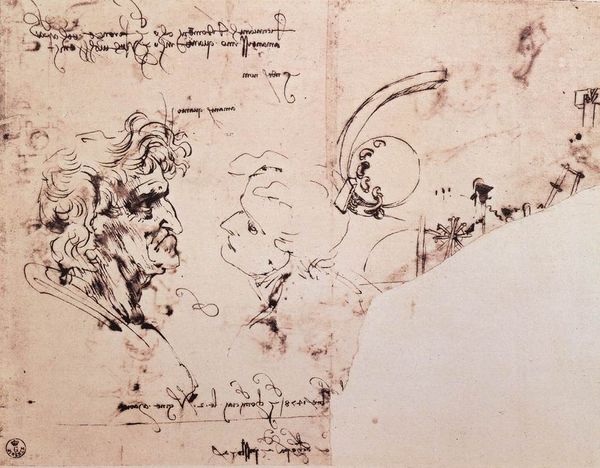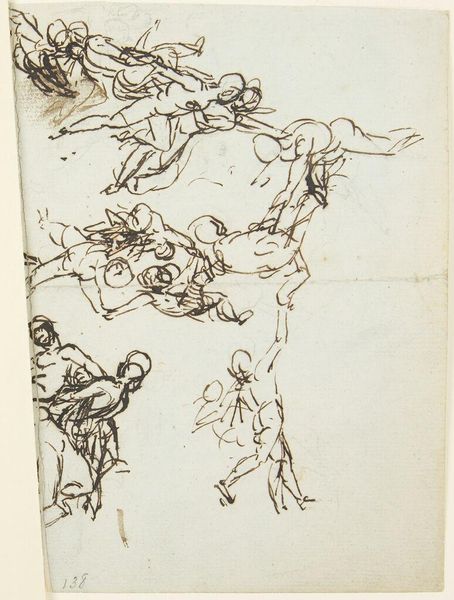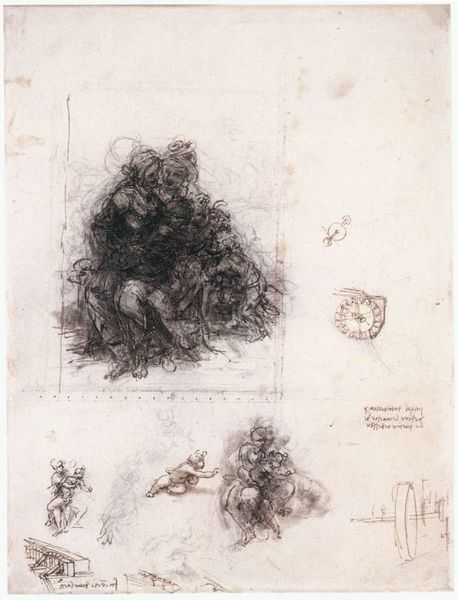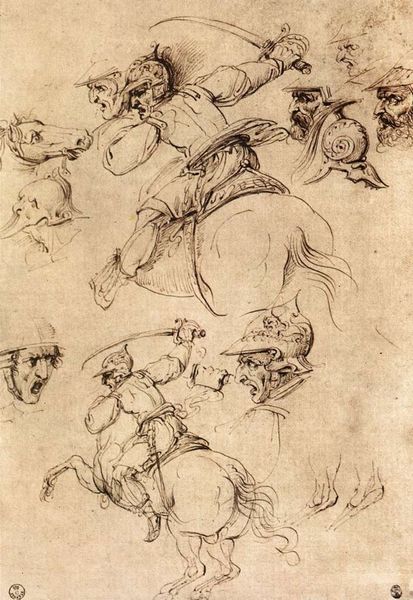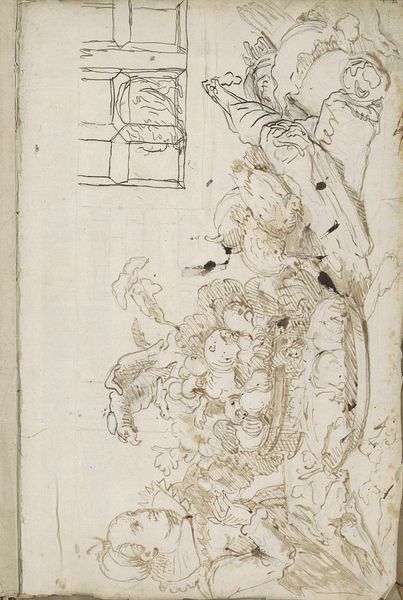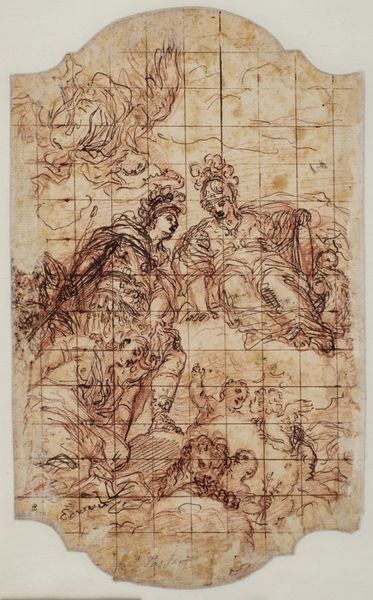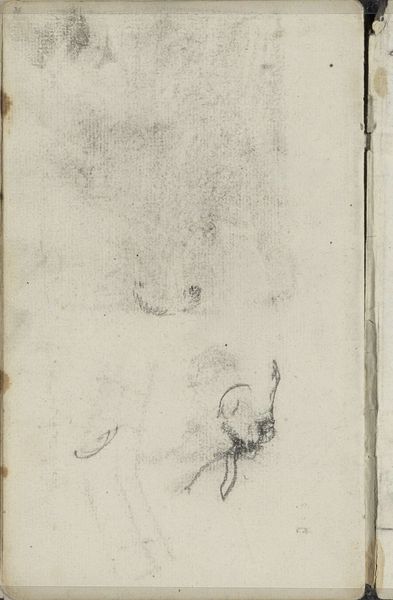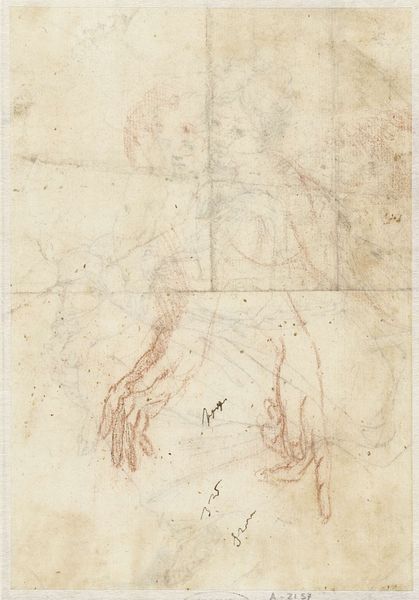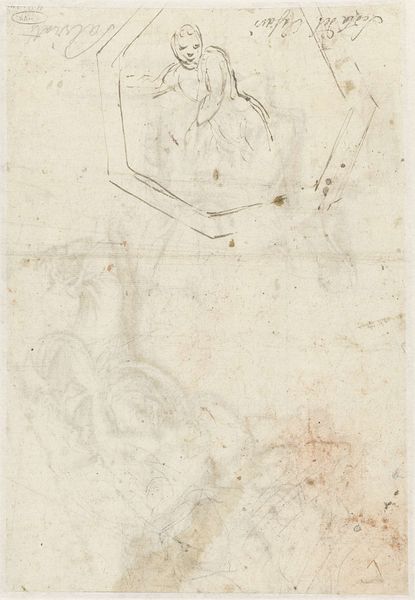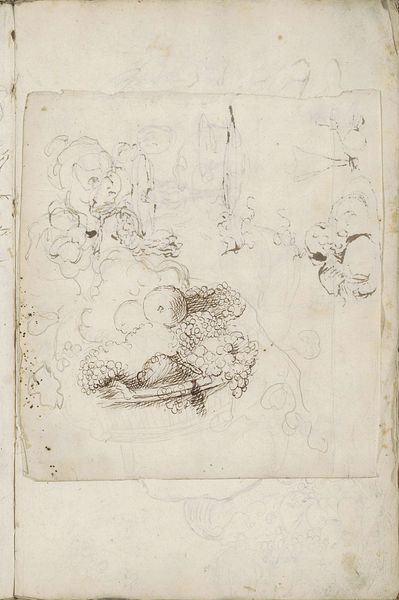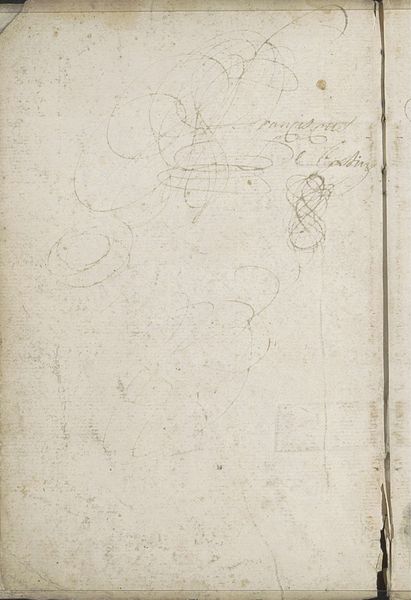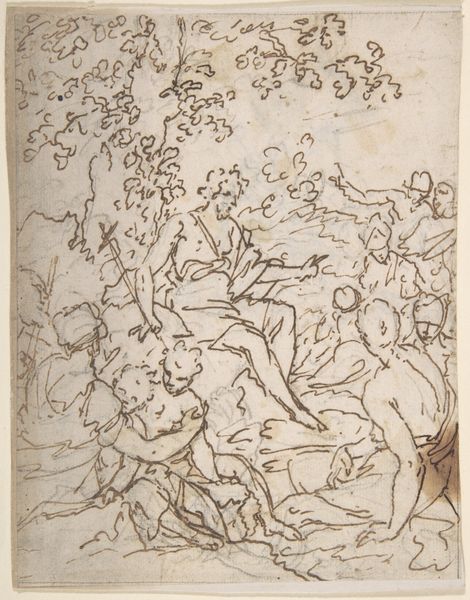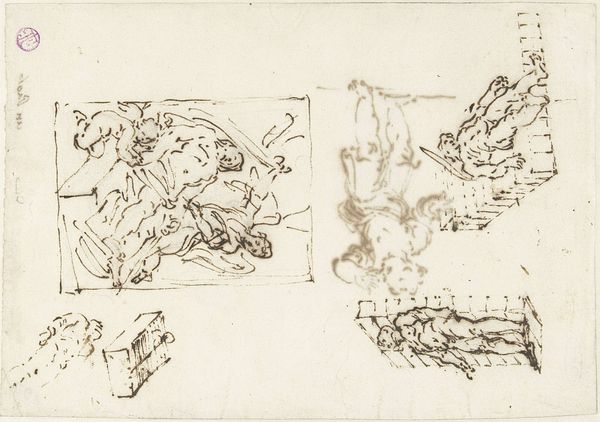
drawing, paper, ink, pen
#
drawing
#
light pencil work
#
pencil sketch
#
war
#
figuration
#
paper
#
11_renaissance
#
ink
#
sketch
#
pen-ink sketch
#
horse
#
men
#
line
#
pen
#
history-painting
#
italian-renaissance
Dimensions: 16 x 15.2 cm
Copyright: Public domain
Editor: This is Leonardo da Vinci’s "Study of battles on horseback and on foot," made in 1504 using pen, ink and pencil on paper. The furious energy in the lines makes me feel overwhelmed, almost like I'm on the battlefield myself. What strikes you most about the composition? Curator: The formal arrangement is quite striking, wouldn't you agree? Notice how Da Vinci uses line to create movement. The frenetic quality you mentioned arises, in part, from the sheer density of lines. What do you make of the overall structure of these chaotic lines? Editor: Well, it feels top-heavy, with that dense cluster of figures at the top seeming to overwhelm the looser sketches below. Curator: Precisely. Observe how the heavier, more detailed rendering at the top serves as a focal point, a condensed expression of conflict, contrasting with the relatively sparse treatment below. This juxtaposition highlights a formal tension, does it not? Editor: So it's not just a chaotic mess, but a deliberate play with density and emptiness? The blank spaces draw your eye to the more frantic lines. Curator: Exactly. Da Vinci uses negative space as an active element. The lines themselves aren't just descriptive, but formally structural, defining not only the figures but the dynamic relationships between them and the void. Have you noticed anything else noteworthy about these lines? Editor: Now that you mention the lines, it seems they almost have a life of their own. They definitely communicate energy. It’s all about motion and dynamism. Thank you! Curator: Indeed. It's a remarkable display of line as both representation and formal device. A study in pure movement and force. Thank you for your perspicacity.
Comments
No comments
Be the first to comment and join the conversation on the ultimate creative platform.
